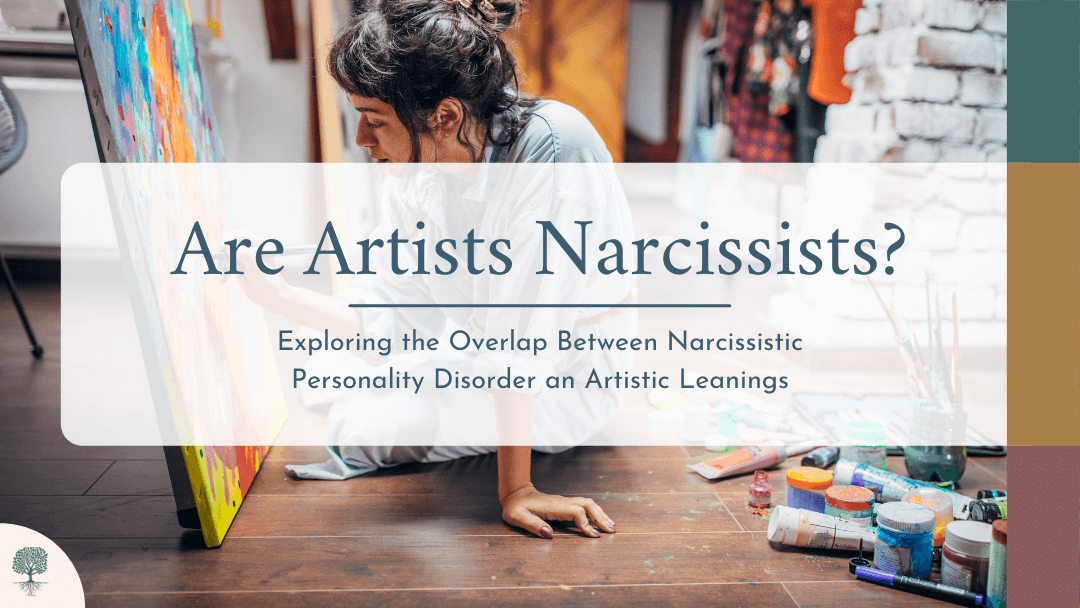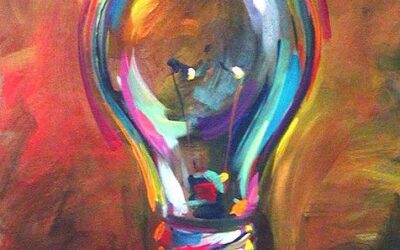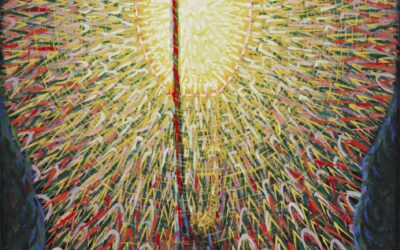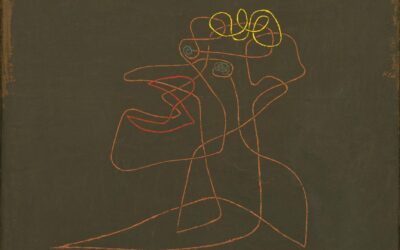
I had a patient ask me one time if artists were narcissistic. The question sent me for a loop because it hit on such a basic truth about how these personality types communicate. Patients with Narcissistic Personality Disorder are deeply ashamed of some part of themselves on an unconscious level. This shame comes from trauma, abuse or neglect in childhood. The shame is so deep that all of their conscious and unconscious energies go into controlling others perception of themselves and elevating those perceptions to the superlative. Narcissistic patients are easy to spot because their obsessiveness with controlling the therapist’s; and the rest of the world’s; opinion of them overrides and disrupts all of the other processes of life. Narcissists rarely present to therapy of their own volition but when they do the therapist has their work cut out for them. Narcissists see the world as a contest where they must show others their superiority to compensate for an unconscious feeling of worthlessness.
Narcissists don’t care if any of the perceptions others have of them are accurate. They only care that others hold grandiose beliefs about them. Narcissists divest enormous energy into controlling the opinions of those around them, but make no attempt for improving themselves to make others’ opinions of them true. Narcissists care about how their home, family, and career appear to others. They do not take steps to behave morally, remedy problems in their households or make practical investments for their families until these behaviors threaten others false beliefs about their greatness.
Artistic people are part of the personality style that Karen Horney called “moving away from people” in her 1950 book Neurosis and Human Growth. Horney observed that children who did not recieve attention consistently while individuating moved out of their environment and into their own heads to self soothe. These children became enamored with deconstructing and expressing the self. These persons are very creative, whether or not they recognize the expressions of their personality that they are injecting into the things that they create as creativity. Self expression in this personality style not only served the purpose of letting these persons learn to soothe themselves as children, but also allows them to “trick” others into understanding them by encoding their personality into humor, style, or story telling.
These patients are recognizable in therapy because they are the slowest to feel safe with the therapist. “Moving away from people” personality type persons feel safer in smaller groups and communities that allow them to “read the room” and understand how people will interact with each other and themselves in advance. Other personality styles are more reactive and are able to interact with larger and more complex groups without feeling overwhelmed. Often this style can be too in touch with their feelings and overly need to document or express their experience creatively or verbally.

Moving away from people personality type patients have a unique knack for encoding their beliefs, personality and opinions into artistic creations because they craved as children recognition and understanding that was denied them by their caregivers. Art, humor, fashion, and even business, become a way of communicating something about themselves to others passively. At some point in development moving away from people style patients believed that some part of them was not allowed or would not be accepted. This is one of the reasons that humor is usually associated with outgroups in American and other cultures. Persons that feel excluded or are different from the mainstream culture at are more likely to develop mechanisms that allow them to be understood by society.
The artistic personality type as discussed above also cares deeply about others perceptions about them. The artist learned from an early age to master inner symbols and metaphor to communicate who they are to the outside world. The artist felt at an early age that some part of them self would not be accepted by a caregiver or a caregiver wouldn’t understand some part of them without help.
Artists are perhaps solipsistic, but they are not narcissists. Artists care deeply about being understood for who they honestly are. Art becomes simply a method of communicating this honest self. Both the artist and the narcissist feel that they have unacceptable parts that they need to compensate for. The artist wants to be understood by others for who they are while the narcissist needs others to believe a lie.
Narcissists do not understand the mechanisms that the artist uses. They often have no defenses against them. Narcissists aren’t funny. If you ask a narcissist to tell you a joke they will often give a crude observation about power at the expense of an enemy or out group. If humor exists in the narcissist’s arsenal at all it is a blunt instrument to impress or belittle others. Narcissists have no use for subtlety. They are bored by metaphor.
Artists not only want to be understood by others, but also to understand themselves. As the artist matures and develops they will begin to deconstruct themselves with the same tools that they used in earlier life to be understood by others. I work with lots of artists in therapy. Sensitive people are more drawn to therapy because they see it as a tool for self discovery in addition to a means to healing. In brief artists change because they want to, Narcissists don’t. Narcissists can’t. Self improvement is impossible, they needed the world to see them always at the zenith of development and accomplishment.
The narcissist sees their own reflection in people that are the same as them, and act like mirrors to worship themselves as it is now. The actualized artist finds parts of their soul in people who are different than they are, like divining pools through which to discover the self that we want to become. People who only like other people who are similar to them, or people they can see themselves in, have some element of narcissism in their personality. True empathy is interested in people who are different from them, not people who are the same.
When I thought about this dynamic I was shocked at how subtle and ancient this theme is in culture. The truth is that no one is purely an artist and no one is purely a narcissist; but there is still an element of these things at play every time we try to reach outside of ourselves into another person and affect their gaze. Petronius’s Satyricon is on its face a celebration of the emperor Nero’s values, but in its nuances a criticism of his excesses and grotesquery. Debate continues among historians about whether or not Machiavelli’s The Prince is a satire of power or an honest manual for holding it.
The need to lie, or to be understood is perhaps beneath the original impetus for the telling of the first stories. I am reminded of how Homer inserts himself into The Odyssey as the blind poet who, according to Homer, first hears Odysseus tell the story of his voyage that would later become Homer’s story The Odyssey. Homer, being a blind person in a society obsessed with accomplishment, created a way to be understood and have value by telling the telling of this story. His character Odysseus is an accomplished liar by his own admission, and has much to gain in the narrative of The Odyssey by inventing this tale. Was he an artist or is Homer using Odysseus as an admission that they are both full of shit?
I thought about how this debate rages still in our culture politically, socially, artistically. “Can’t they see through what he is doing”. People become furious that others cannot see through the artifice of charlatans, but instead mistake it for the honesty of the artist. “How could anyone be stupid enough to see through him”. I hear these phrases uttered all the time by artists and narcissists alike. The line between the urge to be understood for what we are and the urge to lie about who we are is such a grey one because we keep the truth a secret even from ourselves. Even we don’t want to know the truth. If you are in a caretaker profession, like therapy, you are likely some mixture of artist and narcissist. Do you want to know which one you are? I know I don’t.
Bibliography:
Horney, Karen. Neurosis and Human Growth. W.W. Norton & Company, 1950.
Kernberg, Otto F. Borderline Conditions and Pathological Narcissism. Jason Aronson, 1975.
Kohut, Heinz. The Analysis of the Self. International Universities Press, 1971.
Masterson, James F. The Narcissistic and Borderline Disorders: An Integrated Developmental Approach. Routledge, 1981.
Vaknin, Sam. Malignant Self Love: Narcissism Revisited. Narcissus Publications, 1999.
Further Reading:
Petronius. Satyricon. Translated by William Arrowsmith, University of Michigan Press, 1959.
Machiavelli, Niccolò. The Prince. Translated by W.K. Marriott, Project Gutenberg, 2006.
Homer. The Odyssey. Translated by Robert Fagles, Penguin Classics, 1996.
Jung, C.G. The Archetypes and the Collective Unconscious. Translated by R.F.C. Hull, Routledge, 1991.
Panksepp, Jaak, and Lucy Biven. The Archaeology of Mind: Neuroevolutionary Origins of Human Emotions. W.W. Norton & Company, 2012.
Hogan, Patrick Colm. Affective Narratology: The Emotional Structure of Stories. University of Nebraska Press, 2011.
Elias, Norbert. The Civilizing Process: Sociogenetic and Psychogenetic Investigations. Blackwell, 2000.
Lasch, Christopher. The Culture of Narcissism: American Life in an Age of Diminishing Expectations. W.W. Norton & Company, 1979.
Twenge, Jean M., and W. Keith Campbell. The Narcissism Epidemic: Living in the Age of Entitlement. Atria Books, 2009.


























0 Comments